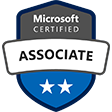Course Overview:
Every programmer must keep up with the latest tools and techniques. This course will help you push your skills to the next level and become a more accomplished programmer. Advanced PERL Programming teaches you all the complex techniques for production-ready PERL programs and explains concepts such as introspection, overriding built-ins, extending PERL's OO model, and testing your code for greater stability.
Attendees to P-415: Advanced PERL Programming will receive TechNow approved course materials and expert instruction.
Dates/Locations:
No Events
Duration: 5 Days
Course Objectives:
- Advanced Techniques
- Parsing Techniques
- Templating Tools
- Objects, Databases, and Applications
- Natural Language Tools
- PERL and Natural Languages
- Handling English Text
- Modules for Parsing English
- Categorization and Extraction
- PERL and Unicode
- POE
- Programming in an Event-Driven Environment
- Testing
- Keeping Tests and Code Together
- Inline Extensions
- Just Another PERL Hacker
Prerequisites:
- P-315: Intermediate PERL Programming or equivalent knowledge and skills
Comments
Latest comments from students
